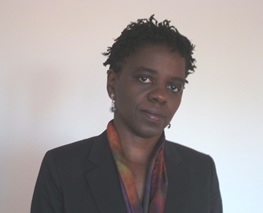Mary Dore’s 2014 documentary, She’s Beautiful When She’s Angry (1), provides a rudimentary summary of the second and third waves of white feminism, while glossing over the significant contributions made by women of color and LGBTQIA+ communities and failing to adequately acknowledge the intersectional nature of systemic oppression. In this sense, it gives weight to the thesis of Bhandar and da Silva’s critical response to Nancy Fraser’s The Guardian article, “How feminism became capitalism’s handmaiden – and how to reclaim it” (2), in which they express frustration at how “White feminists speak of second-wave feminism as if it were the only “feminism” and use the pronoun “we” when lamenting the failures of their struggles.” (3)


(Denise Ferreira da Silva (left) & Brenna Bhandar (right))
While Dore’s film does acknowledge the fact that it was difficult for middle class white women (the proponents of second wave feminism most recognized in the media) to empathize with the struggles of women of color, and briefly covers the emergence of early lesbian feminist activist groups (namely Lavender Menace), it is framed in such a way that places issues concerning less privileged women secondary to those whose femininity is more aligned with Western traditions. Moreover, discussion of the oppression of Indigenous and trans women is omitted entirely, yet such voices are crucial in any manifestation of contemporary feminisms. The progression of the documentary is directed by the mantra, “The personal is political”, yet whose personal experiences qualify for consideration seems to be legislated by a conservative framework that prescribes stringent ideas about what constitutes Woman.
On the other hand, if we regard She’s Beautiful When She’s Angry as a “Feminism 101” targeted at people who have remained indifferent to social justice issues for most of their lives, it is probably quite effective in convincing such an audience that feminist politics are worthy of their support. Nevertheless, this whitewashed account of the history of feminism is outdated and contributes to the perpetuation of racist conceptions of white being the norm and non-white being the “other”. Being released in 2015, the holes in Dore’s recount speak to its complacency.

(Boston Women’s Health Book Collective, as seen in “She’s Beautiful When She’s Angry”)
As a white male, perhaps it isn’t my place to be so critical in analysis of significant works by feminists, such as Dore’s. And I do not claim to have learned nothing from the documentary either; I was not aware of how severely exclusionary treatment of women in academia was all throughout the 1960s and 1970s, nor was I educated of the history of reproductive injustices and abortion rights in the Western world. The educational potential of Dore’s film is undoubtedly powerful. However, the insight I gained from reading Bhandar and da Silva’s 2013 article “White Feminist Fatigue Syndrome” seemed both more valuable and contextually pertinent, equipping me with a perspective from which this very essay was formulated.
Moreover, it is not my intention to discredit or trivialize some of the poignant themes that underpin Dore’s film; for example, towards the end, it alludes to the fact that contemporary feminism is far from redundant (as many people like to believe), and that the sexism experienced these days is more insidious, as well as harder to identify tangibly with simple language. However, I can’t help but think that, like Fraser, Dore’s narrative shares “the same liberal core that Black and Third World feminists have identified and exposed since very early in the trajectory of feminisms,” (3) in how the proportion of white to colored interviewees is something like 8 to 1, and its focus on the prospect of integrating women into existing power structures, in such a way that they are treated equally to men, as opposed to deconstructing imperialist white supremacist capitalist heteropatriarchy; a system under which all minorities have been persecuted and oppressed for centuries.
______________________________________________________________________
Bibliography
- She’s Beautiful When She’s Angry. 2014. Documentary. Salt Lake City: Mary Dore.
- Fraser, Nancy. 2013. “How Feminism Became Capitalism’s Handmaiden – And How To Reclaim It”. Article. The Guardian. https://www.theguardian.com/commentisfree/2013/oct/14/feminism-capitalist-handmaiden-neoliberal.
- Bhandar, Brenna & da Silva, Denise Ferreira. 2013. “White Feminist Fatigue Syndrome”. Blog. Critical Legal Thinking. http://criticallegalthinking.com/2013/10/21/white-feminist-fatigue-syndrome/.